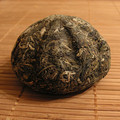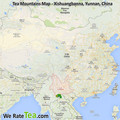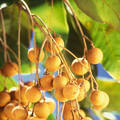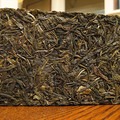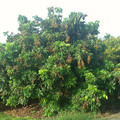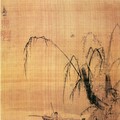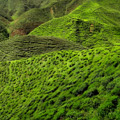Pu-erh tea
„This process was first developed in 1972 by Menghai Tea Factory and Kunming Tea Factory] to imitate the flavor and colour of aged raw pu-erh, and was an adaptation of wet storage techniques being used by merchants to falsify the age of their teas. Mass production of ripened pu'er began in 1975. It can be consumed without further aging, though it can also be stored to "air out" some of the less savoury flavors and aromas acquired during fermentation.“
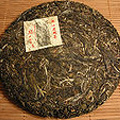
Quotes Tags: Pu-erh, Shu - Ripe Puerh
- Discussion: 0 comments
- Write a comment
Teas - Pu-erh
2013 Spring Hekai Gu Shu Mao Cha
 1 review
1 reviewThe mao cha were picked on the same day from the same tea garden. Light yellow liquor...
2013 White 2 Tea New Amerykah
 2 reviews
2 reviewsThis puer tea cake is made from a 2013 pure Spring blend of gushu [old tree] material...
2015 Chawangpu Hekai Gushu Xiao Bing
 1 review
1 reviewMaterial for this cake came from Man Nan Lao Zhai in Hekai mountain. Man Nan Lao Zhai...
2016 Chawangpu Bada Laoyu Raw Puerh Cake
 0 reviews
0 reviewsLao Yu (老妪) : old woman Material for this cake came from a small Bulang...
2006 Haiwan Certified Organic Pasha
 1 review
1 reviewTall and straight forest - Meng Pasha Pasha in the Aini language means tall and...
Big Green Tree Yiwu 2004
 1 review
1 reviewBig Green Tree Yiwu (special grade) year 2004 is a very nice aged pu-erh still for a...
Quotes - Pu-erh
„Fermentation is a tea production style in which the tea leaves undergo microbial fermentation and oxidation after they are dried and rolled. This process is a Chinese specialty and produces tea known as Hei Cha (黑茶), commonly translated to dark, or black tea (this type of tea is completely different from what in West is known as "black tea", which in China is called "red tea"). “

Quotes Tags: Pu-erh, Tea oxidation, Hei Cha
Video - Pu-erh
Theme
Teas
2006 Haiwan Organic Pasha Tea Brick 500g
 1 review
1 reviewThis brick was stored in Kunming since 2006, it was made by using the best raw materials Haiwan Tea Factory...
2008 Xiaguan FT Xizi (Happy) Tuo Cha Raw 100g
 1 review
1 reviewXizi tuo is one of famous Xiaguan Fei Tai products. Used high quality blend of 1-3 years aged materials and...
BaDa 2013 - blind tasting set 1
 1 review
1 reviewthe pressed leaves aroma is strong and fruity, the taste is bitter, nutty, almond, fruity, fresh, balanced,...
Tea by region
We will help you with tea selection.
Do you like quality loose tea?
We will help you to find the right one for you. Be inspired by tea ratings of other tea lovers. Rating stars could help you.


Review your cup of tea.
Review the tea you are drinking and help other tea lovers to find the right cup of tea.






 Shops
Shops Share on Facebook
Share on Facebook






